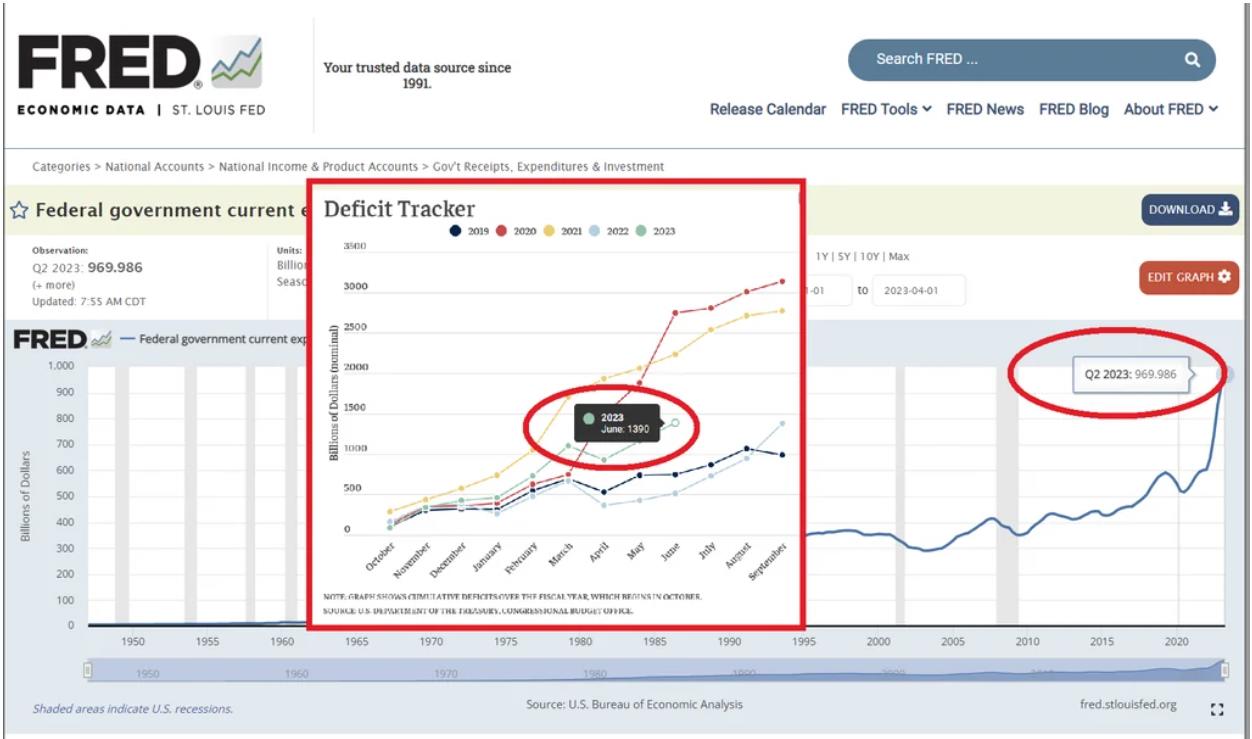by Hephaestus4

Almost $1 trillion in interest payments now, compared to $1 trillion in debt from 1783 to 1981.
US INTEREST TO SERVICE NATIONAL DEBT APPROACHES $1T * pic.twitter.com/EMFEWoCAw9
— The_Real_Fly (@The_Real_Fly) July 28, 2023
The fiscal deficit in the US is already at nearly 7% of GDP and only set to get bigger! pic.twitter.com/ui2kpW9OmL
— Longview Economics (@Lvieweconomics) July 28, 2023
At $32 Trillion, Why Deficits And Debt Matter
Rising US debt and deficits are hindering economic growth. Despite the Keynesian theory advocating deficit spending to boost economic activity, the shift from productive investments to social welfare and debt service yields negative returns. This leads to an increasing reliance on debt to fuel growth, pulling resources away from investments to service debt and social welfare. To reduce debt to manageable levels, a $50 trillion cut from the current debt would be required, potentially triggering major economic downturns. Persistently high debt levels may result in frequent recessions, lower market returns, and a stagflationary environment.
The bond market is on the verge of a major breakdown. Not only will this raise the cost of financing the $32.7 trillion National Debt, but it'll crush the loan portfolios of already insolvent banks. That means a return to QE to bail them out. Fixed-rate mortgage will soon hit 8%.
— Peter Schiff (@PeterSchiff) July 27, 2023
Views: 152